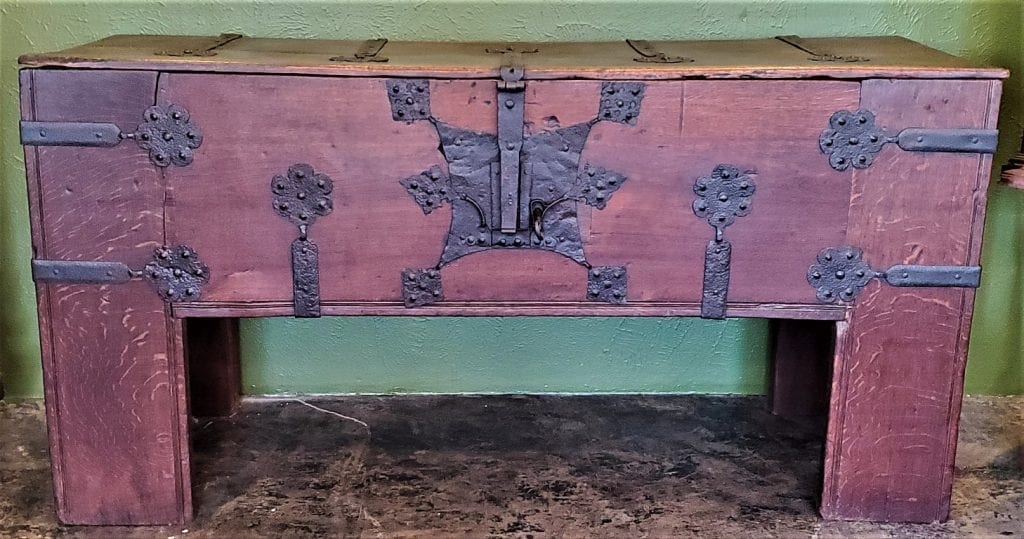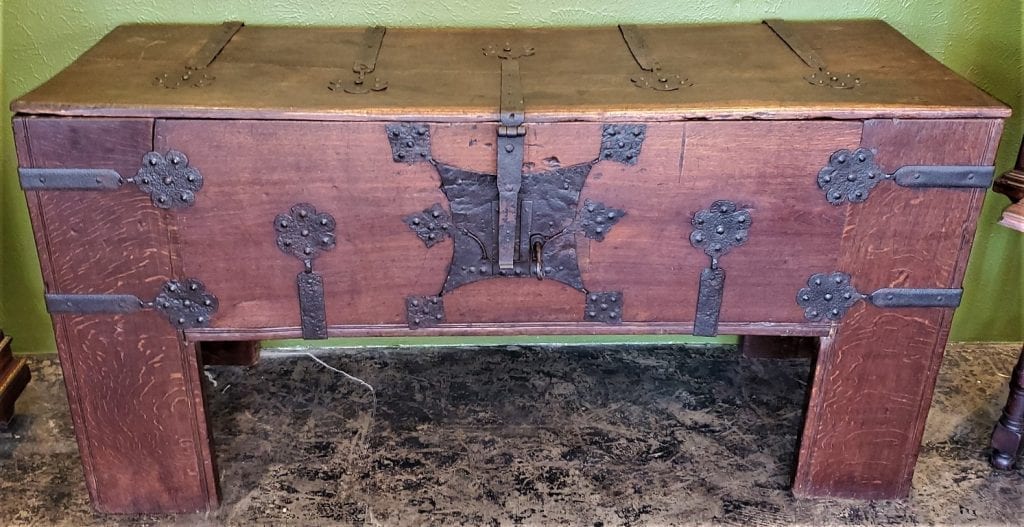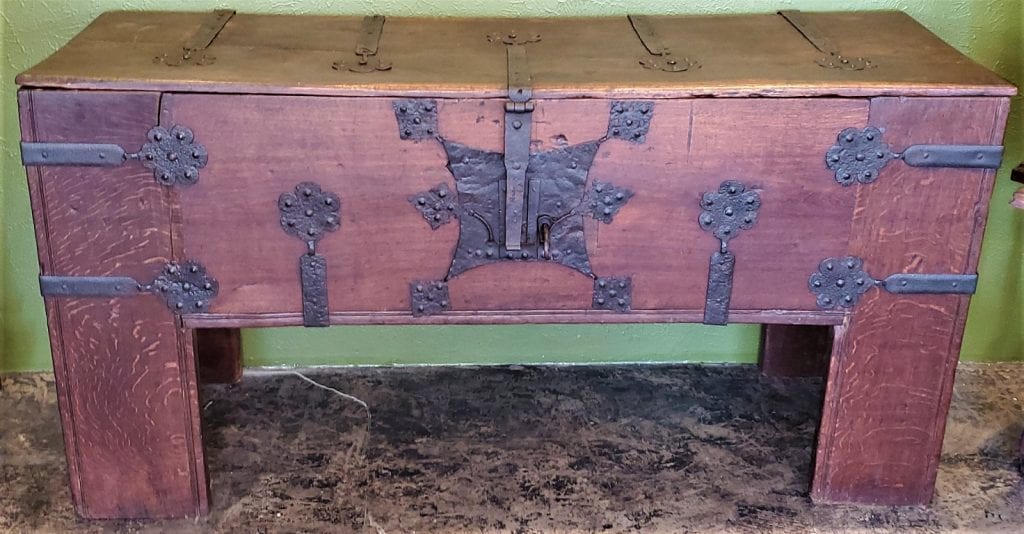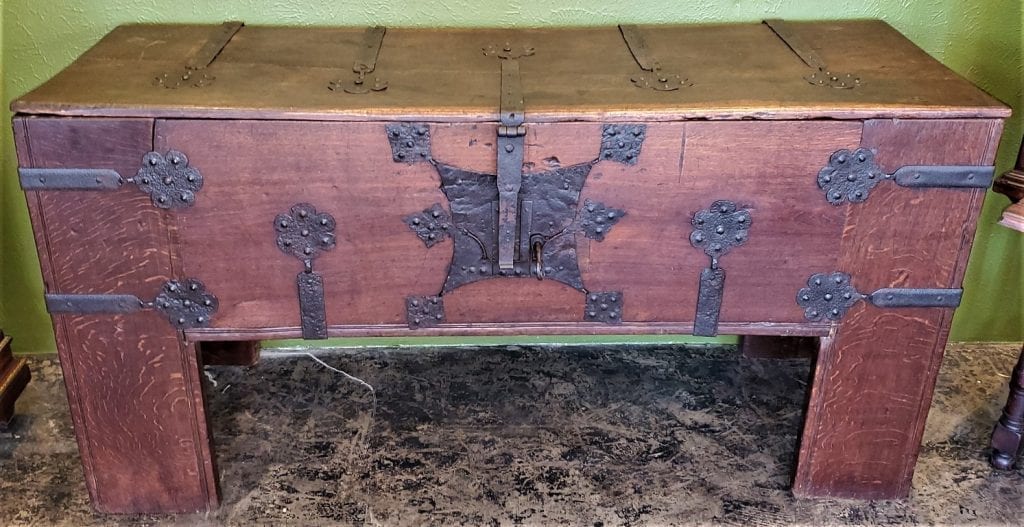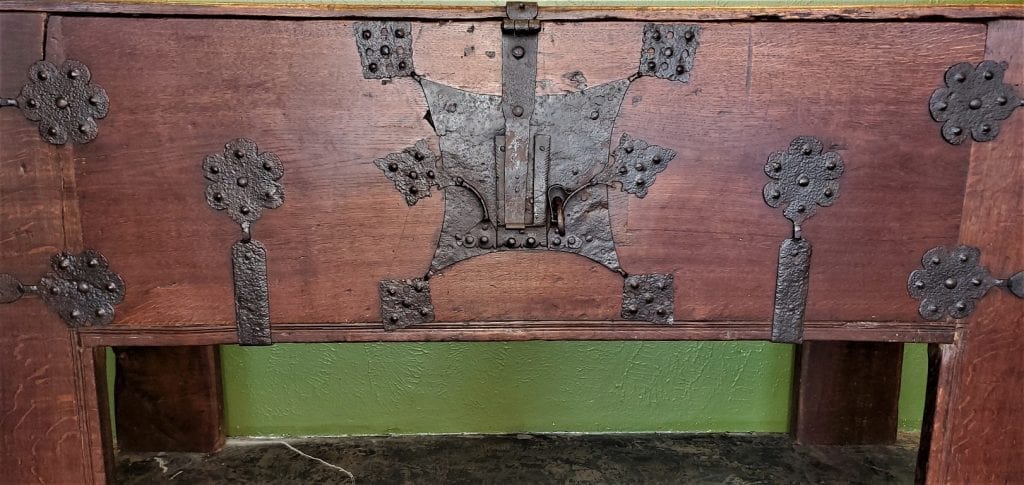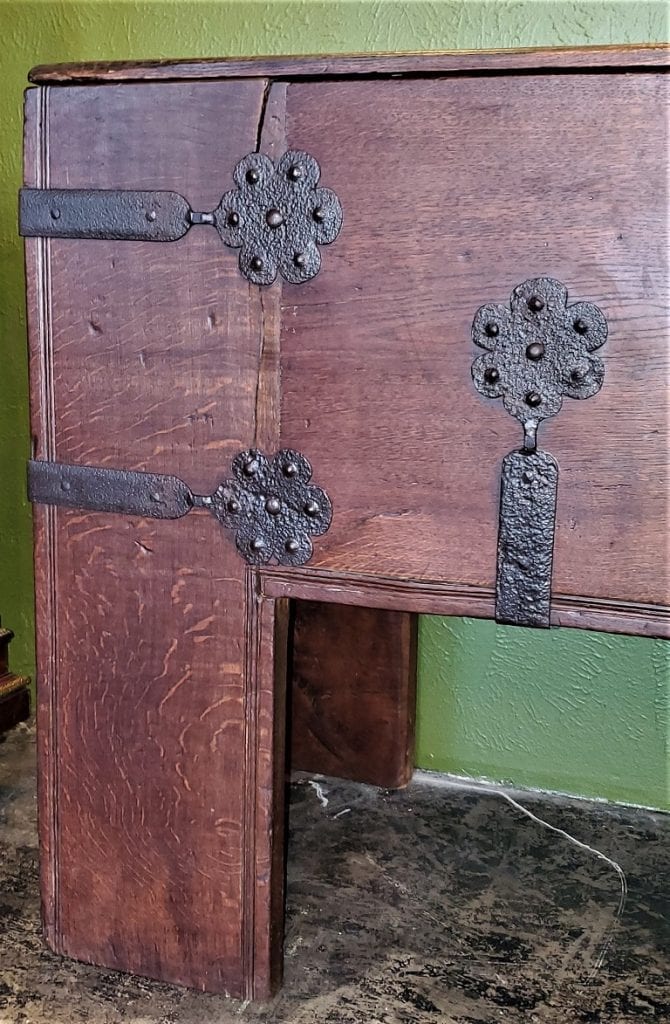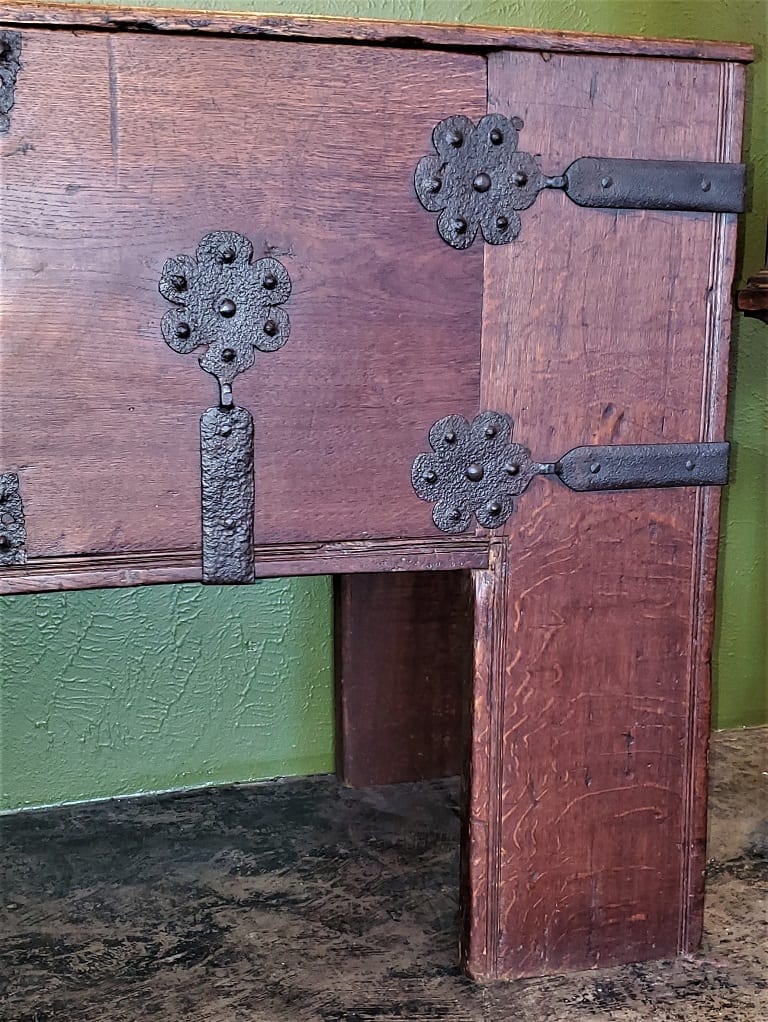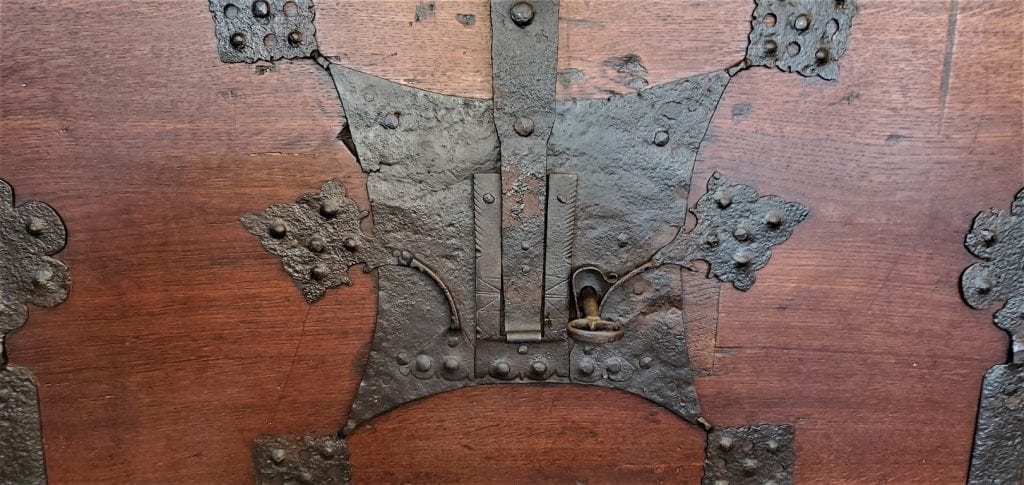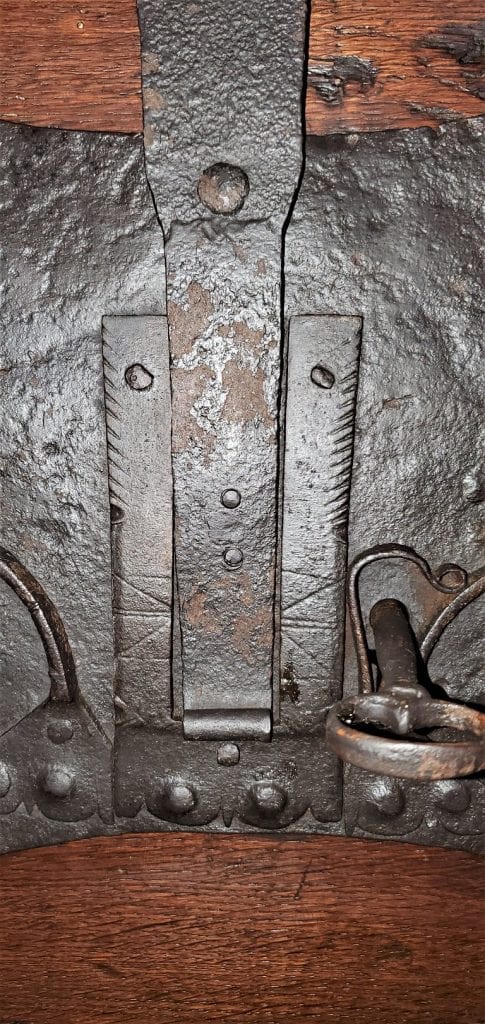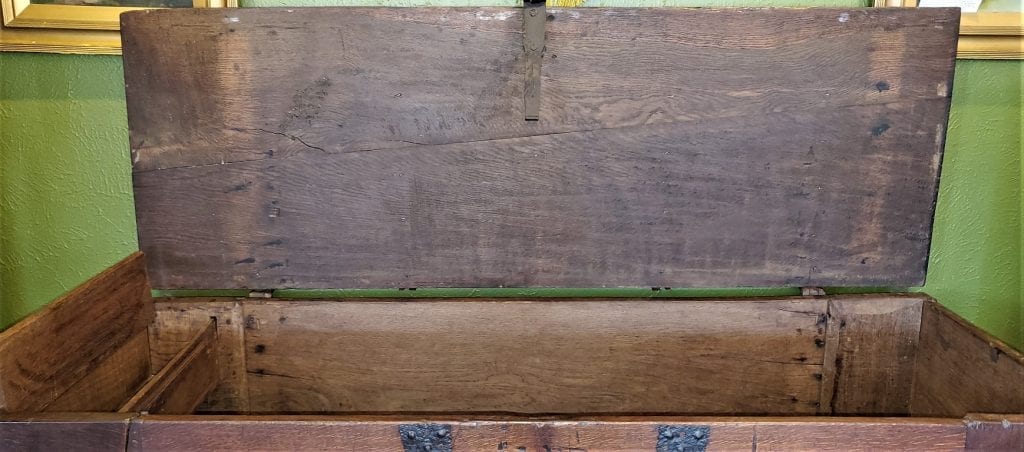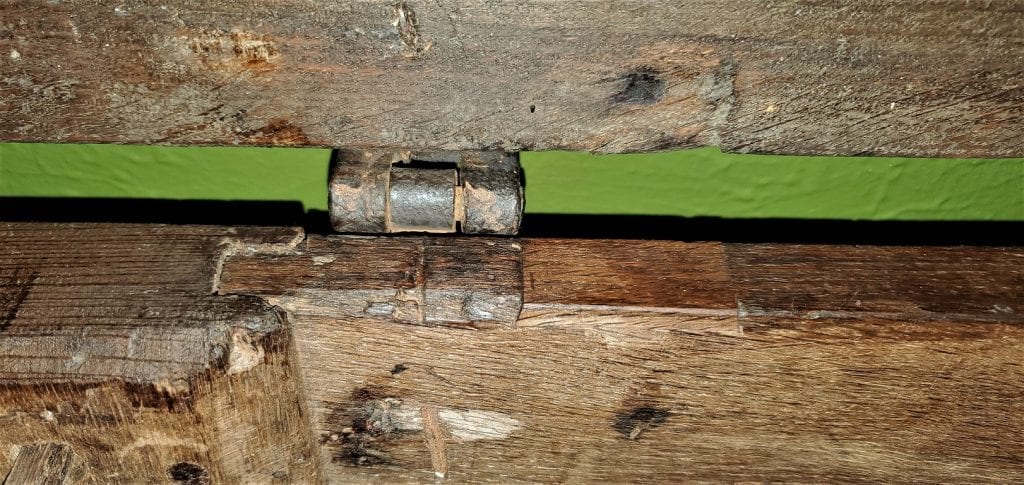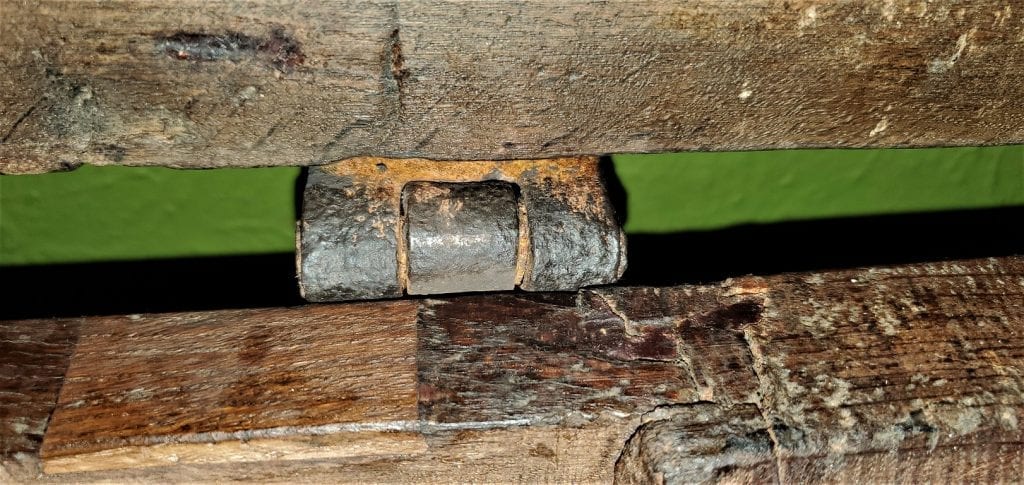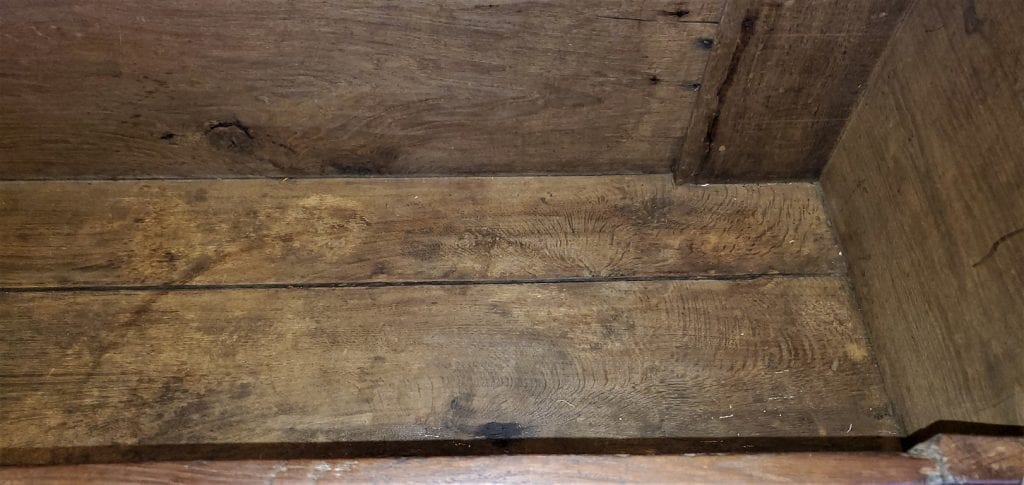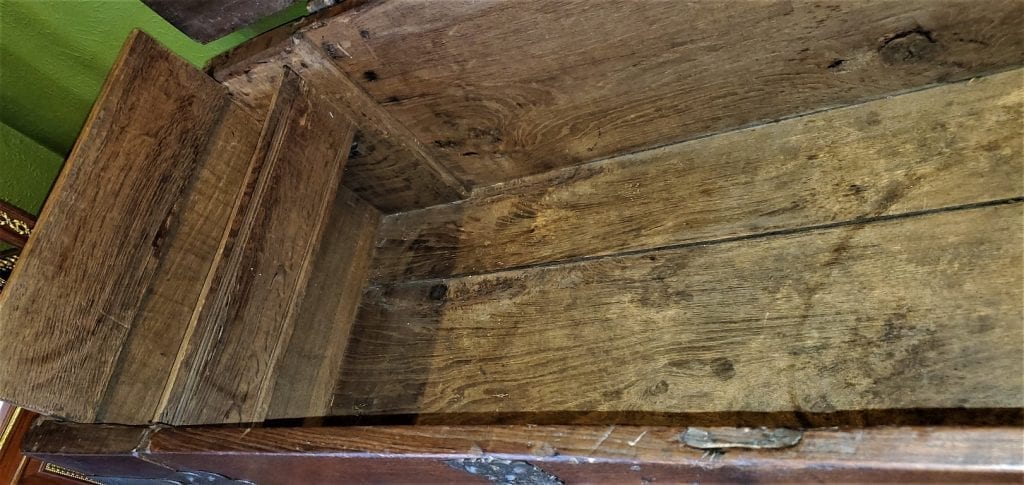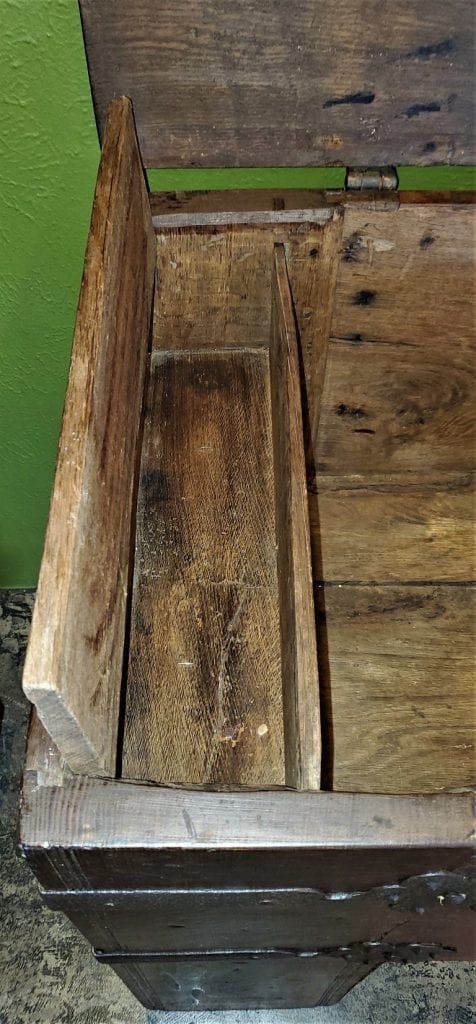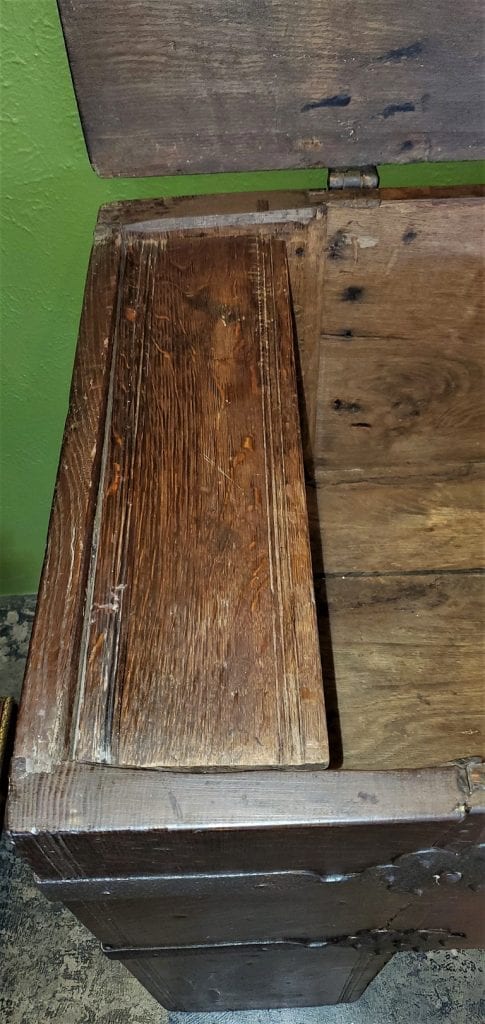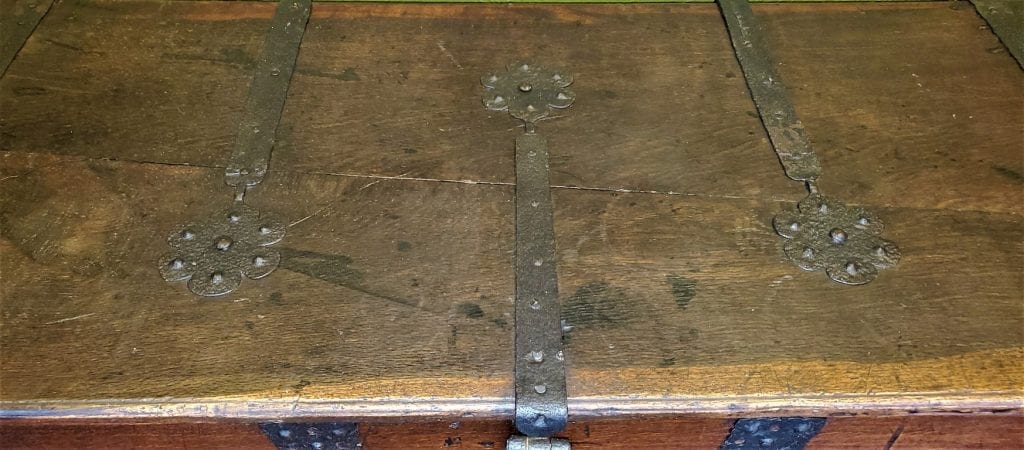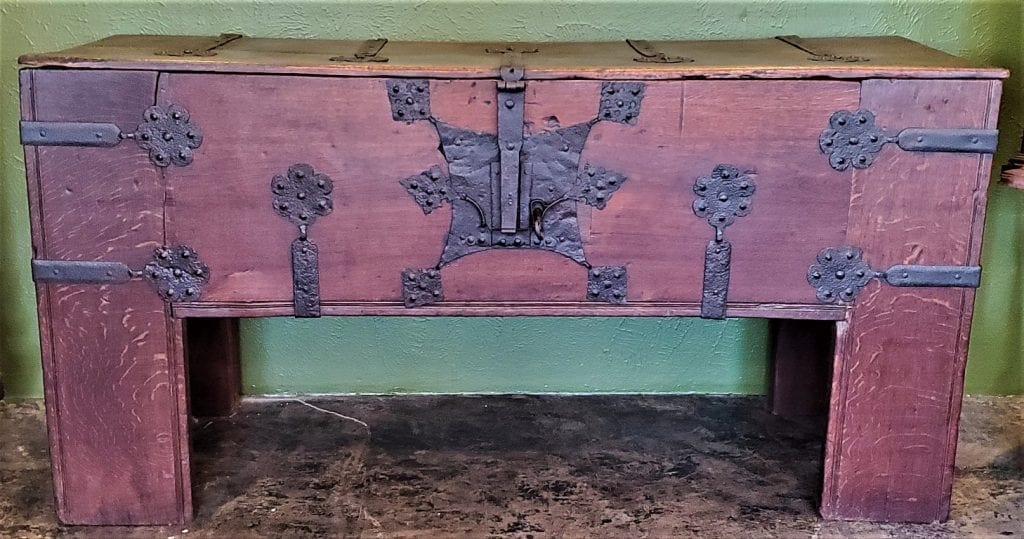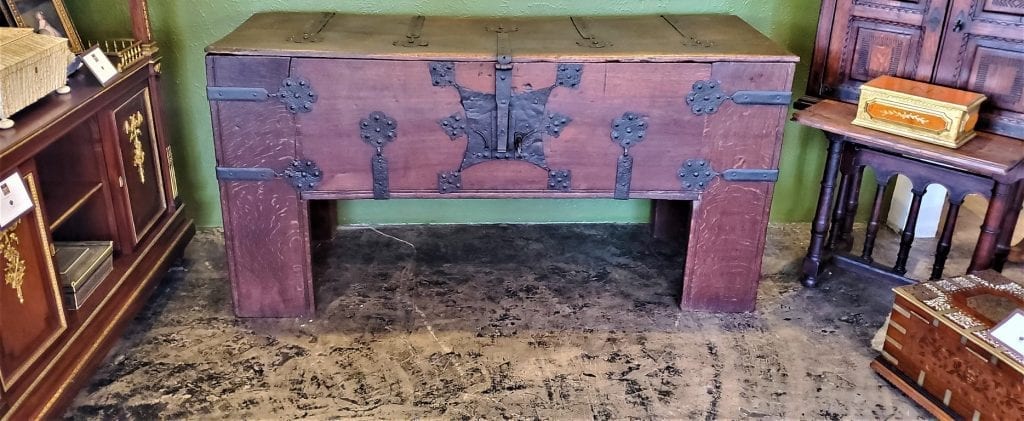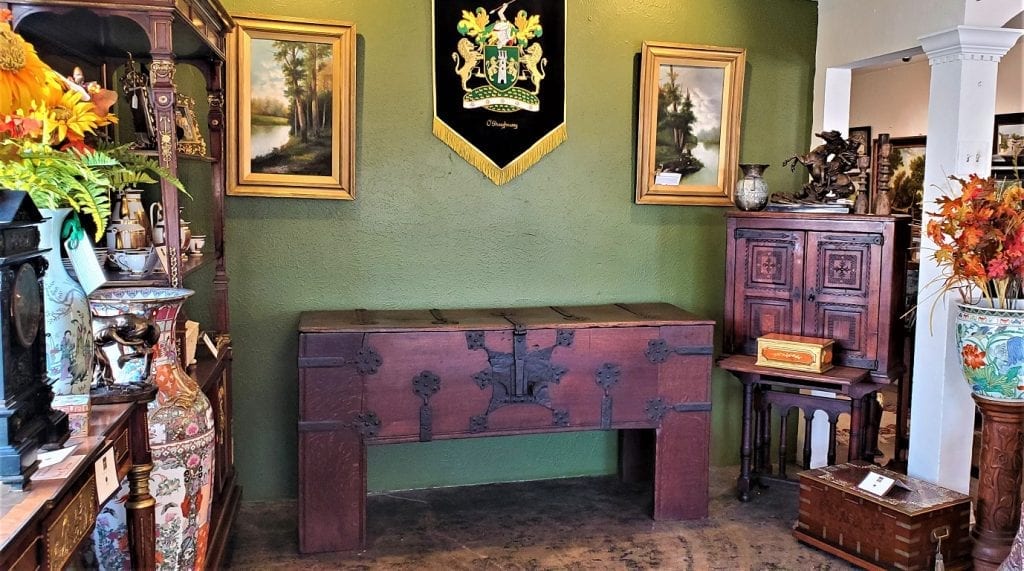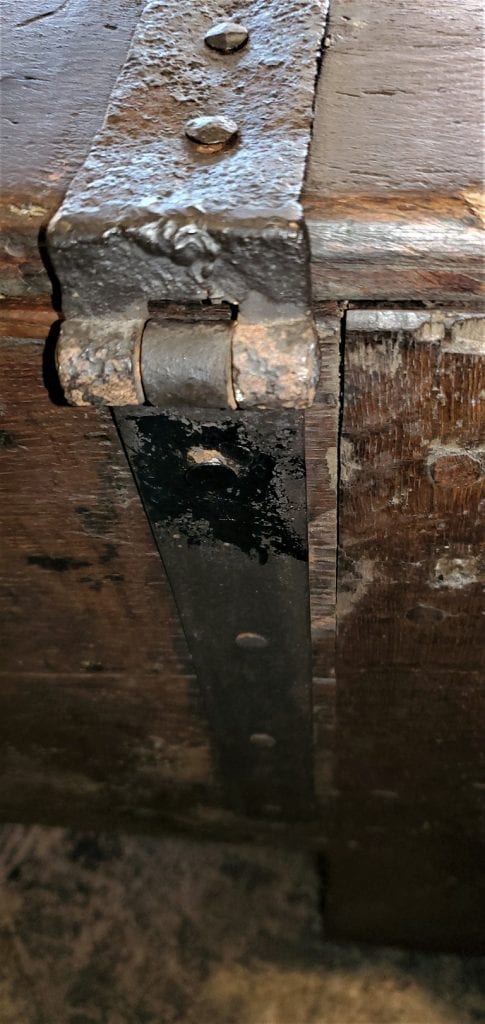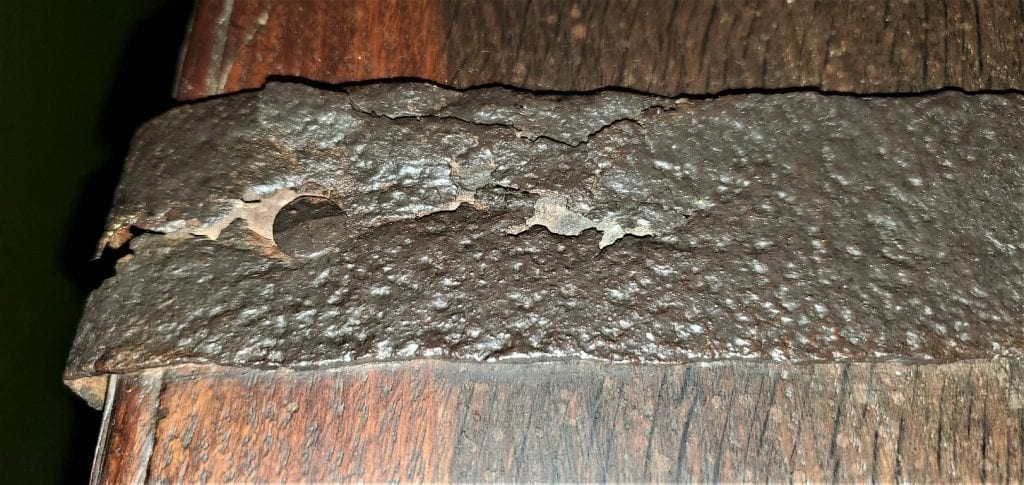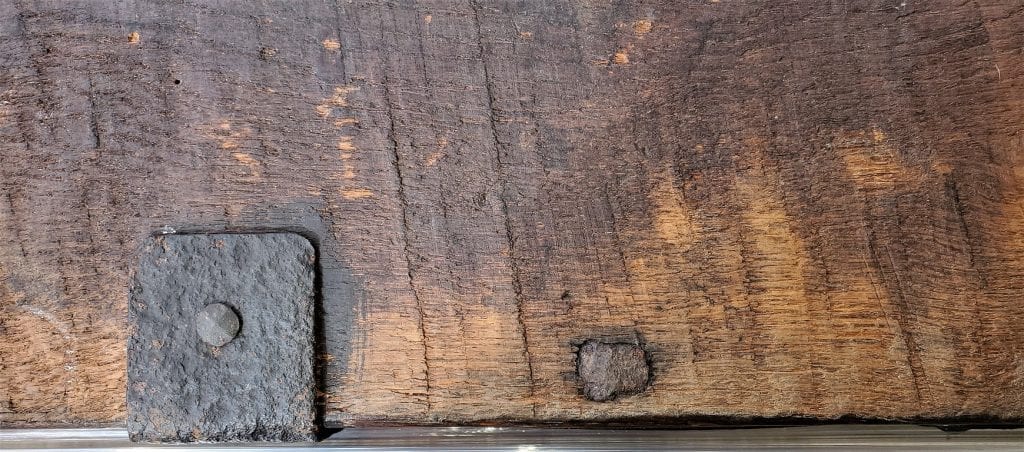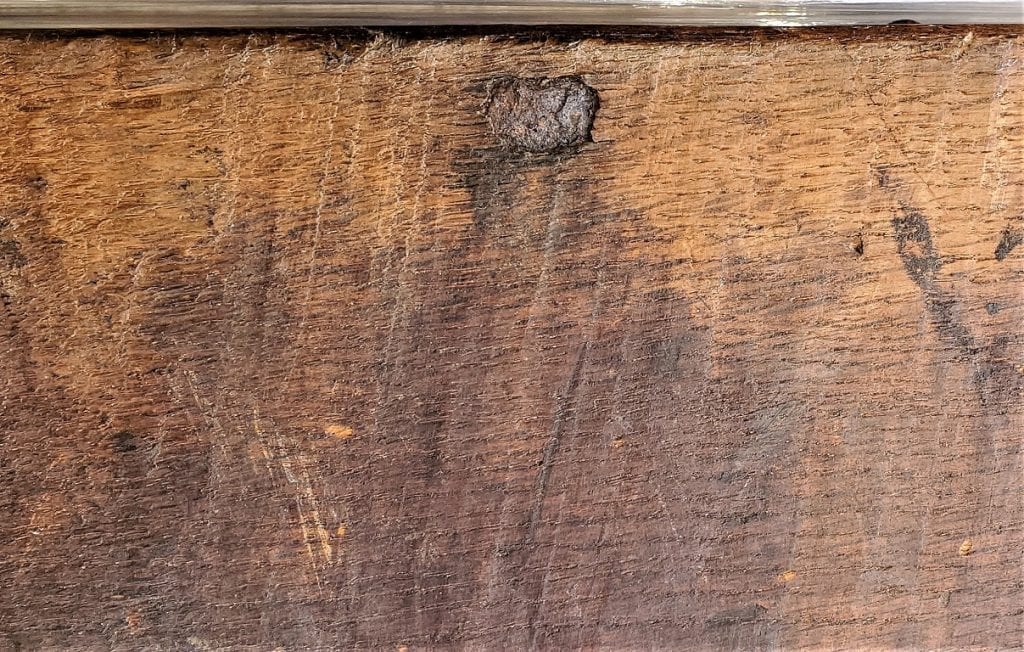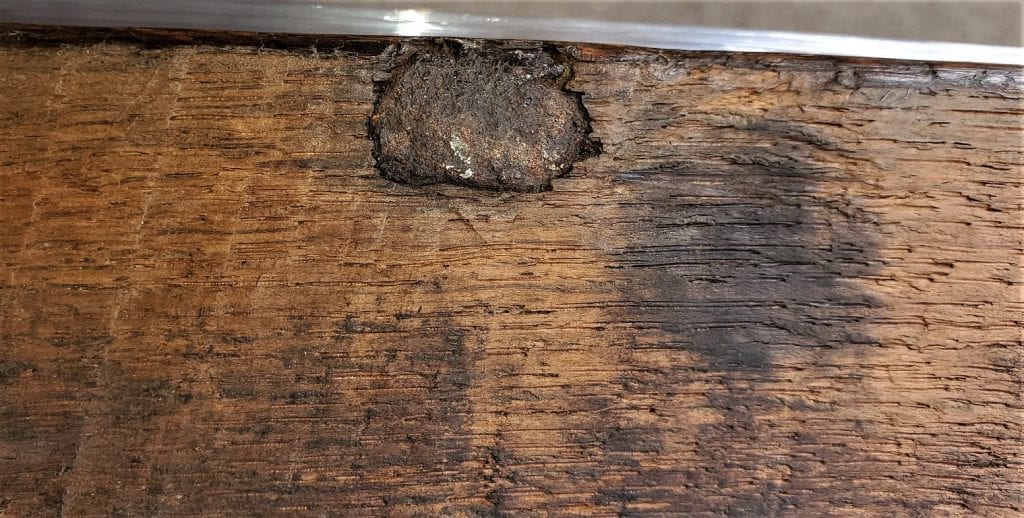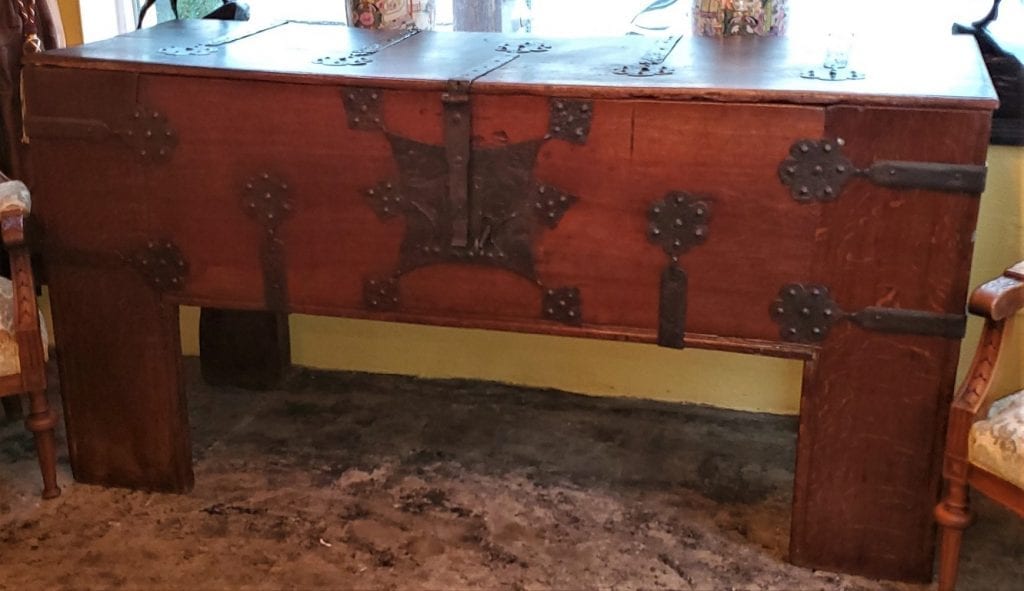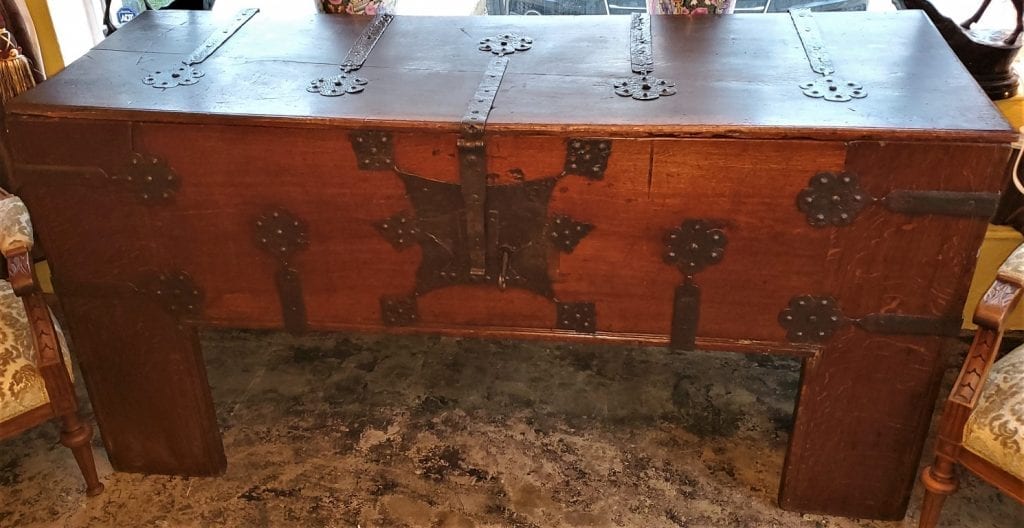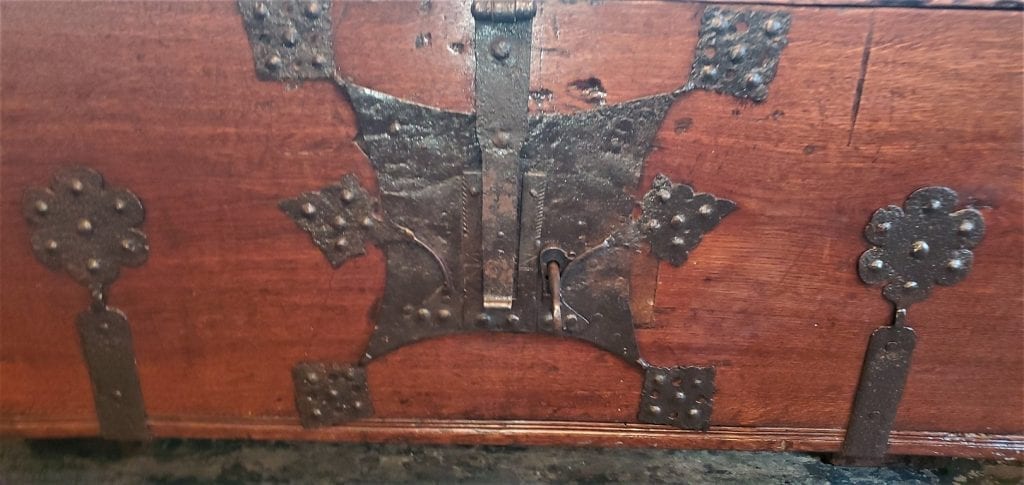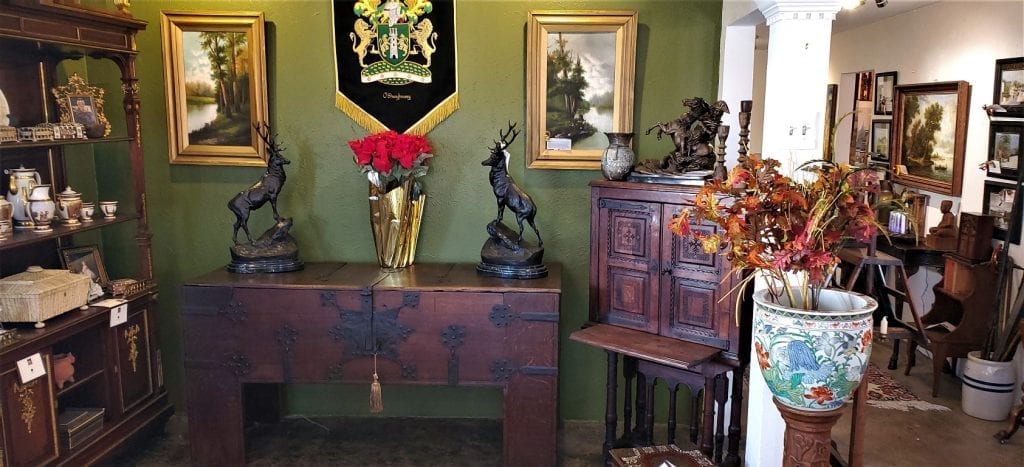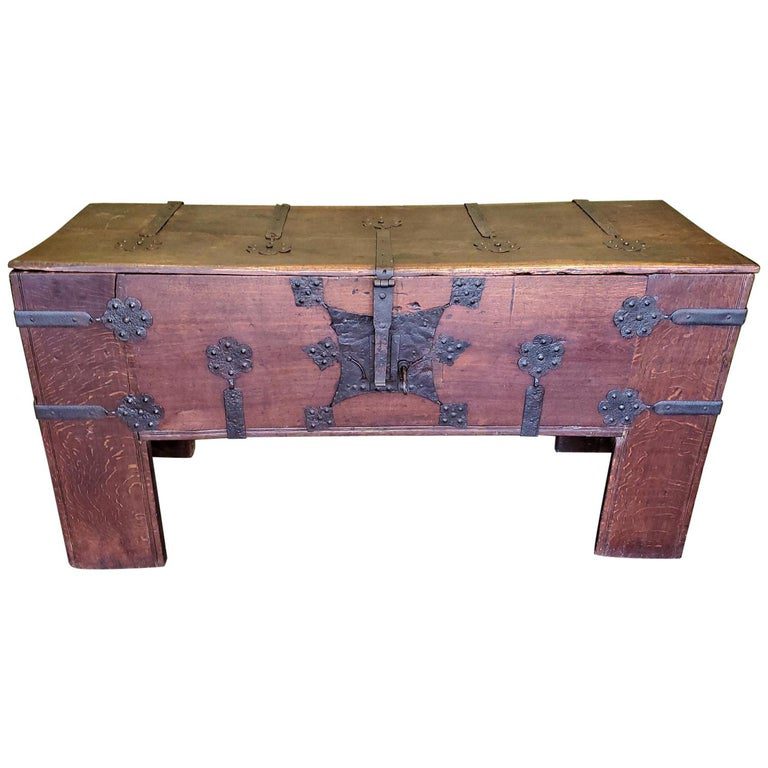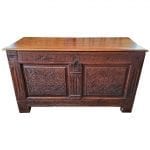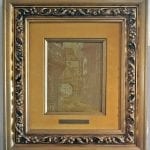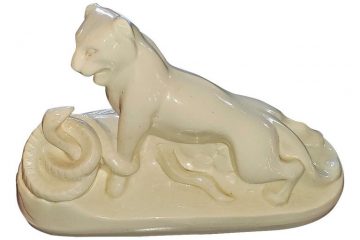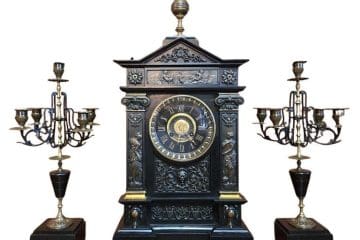Exceptionally Rare (Late Medieval) 16th Century German Wrought Iron Oak Chest or Stollentruhe
WE HAVE THE PLEASURE TO PRESENT an Exceptionally Rare (Late Medieval) 16th Century German Wrought Iron Oak Chest or Stollentruhe.
This is an Early 16th Century, circa 1500-1550, Stollentruhe or German Gothic Chest, from most likely the Province of Westphalia.
It is made of oak and tiger oak, with exceptional wrought iron bands and adornments, with a STUNNING central lock section with the original key and working lock.
Once opened, it reveals a lidded and hinged candle box and storage space.
What adds to the exceptionality of this piece is it’s ORIGINALITY.
It only has one area, where there is evidence of a historic repair, namely, the top/lid’s hinges. This is not surprising in the least, as with most chests from the more recent 18th or 19th Centuries, will have replacement hinges, due to the weight of the chest top when opened and breakages from being let fall backwards, over time. When one considers that this chest is 500 years old, it is hardly surprising that the hinges required some work, at some time, probably in the 19th Century. In this case, one can see where a new wrought iron bracket has been placed on the back of the chest and attached to the ORIGINAL top bracket and hinge, thereby keeping it as original and true to it’s original construction as possible.
Apart from that repair, this chest is SIMPLY STUNNING in it’s ORIGINALITY and construction. Everything else is original, right down to the handmade iron nails.
What elevates this piece in it’s desirability and collectability, is the fact that it’s raised legs have never been cut down or reduced in size from their original height.
These types of chests were always constructed on raised platform feet or legs, as they would have stood on stone floors and raising the chest meant that the contents were protected from the damp and wet. With most of these very early chests (both British and otherwise) the very bottom of the feet or platforms would rot over time, due to coming into contact with wet, damp floors (think of mopping) this would result in the owners cutting the four legs to the same length, to remove the rotted areas.
It is VERY RARE indeed, to find one of these chests that has not had it’s legs cut down over time.
There are only in the region of 4 of these chests for sale Worldwide:- 2 in Germany and 1 in the UK and OURS.
Whilst, some of the other chests on the market, have more ornate decoration, this one is exceptional because of it’s originality.
THIS CHEST WAS IN EXISTENCE, WHEN MARTIN LUTHER WAS LEADING ‘THE REFORMATION’
IRONICALLY, IN PROVINCES NEIGHBORING WESTPHALIA
Most people refer to these as blanket chests, but on this I am going to slightly disagree, Whilst the candle box is often replicated in subsequent variations on the model of a blanket chest, I simply cannot reconcile the elaborate locking mechanism, as being something that would be necessary to protect simple linens. Also, the height of the piece is not conducive to it being used at the base of a bed for bed linens. Also, the elaborate banding and craftsmanship of the wrought iron, is something that was intended for display and not to be hidden away in a bedroom.
In my opinion, therefore, this is a ‘silver or treasure chest’ for keeping valuables securely under lock and key, like for example, silver candelabras etc – hence, the candle box.
Construction:
The chest is of joined, ‘clamp-front’ construction, reinforced by the nailed, iron mounts. In total it uses ten, oak boards which were riven and planed. The back and front are each formed from a large single plank held to the full height stiles by long, pegged tenons. The sides are also single boards joined into the stiles using long tenons held by dowels, and extend down below the chest bottom, concealing the ends of the bottom boards. The bottom consists of a single board cut into the sides and shallow rebates in the stiles. The front and back boards are dowelled into the bottom boards. The lid which overhangs the sides has a narrow cleat at each end, and consists of one wide plank which has bowed a little as a result of shrinkage.
Ironwork :
The wrought ironwork straps, lock-plate, hasp and lock all appear all appear to be early, and of the same original manufacture and are fixed with convex headed nails. There is mild dark staining of the oak around the iron mounts, possibly because of low tannin content in the oak.
Related to:
No 900:2-1904 V&A Museum, London. Stadtmuseum Dusseldorf. Decorative Arts Museum Berlin. Museen Schleswig-Holstein & Hamburg. A related example featuring elaborately-carved feet and formerly in the Horsham Museum, West Sussex, sold at Christie’s in 2010 for £97,250 and another example, again with carved feet sold at Sothebys in 2006 for £48,000.
Literature:
A similar example is illustrated in H. Lüttgens, Alt- Aachener Wohnkultur; Ein Rundgang durch ein altes Aachener Haus im Wohnstil des 18. Jahrhunderts, Aachen, n.d., ill. 12, and another comparable iron-bound chests illustrated in H. Kreisel, Die Kunst des Deutschen Möbels, Munich, 1974, pls. 45-46.
This type of large oak standing chest is known as a ‘stollentruhe’ (studded chest) and is thought to have been made from at least the early-16th century, based on the style of ironwork and form of the front legs which tend to be carved on earlier models. The German Renaissance was established and Albrecht Dürer and Lucas Cranach the elder were famous throughout Europe. The type has become closely associated with the Westphalia region in central, western Germany (between the Rhine and Weser rivers, located north and south of the Ruhr River).
Comparative literature:
• Baumeier, Stefan, Beschlagene Kisten; Die ältesten Truhen Westfalens, Essen, 2012.
• Falke, Otto von, Deutsche Möbel des Mittelalters und der Renaissance, Stuttgart, 1924.
• Kreisel, Heinrich, Die Kunst des deutschen Möbels, Von den Anfängen bis zum Hochbarock, München, 1968, Band I.
• Stülpnagel, Karl Heinrich von, Die gotischen Truhen der Lüneburger Heideklöster, Cloppenburg, 2000.
• Windisch-Graetz, Franz, Möbel Europas, Band I, Von der Romanik zur Spätgotik, München, 1982.


Exceptionally Rare (Late Medieval) 16th Century German Wrought Iron Oak Chest or Stollentruhe
Provenance: From a Fine Dallas Collection.
Condition: Very good original condition. Some natural wear and minor loss to some of the wrought iron straps. There is a crack on the chest top/lid through age and wood shrinkage, but the crack does not in any way destabilize the top/lid and is cosmetic in nature only. Rear hinges historically repaired (See full posting for details).
Dimensions: 35.5 inches tall, 69.5 inches wide and 24.5 inches deep.
SALE PRICE NOW: $48,000 $36,000
